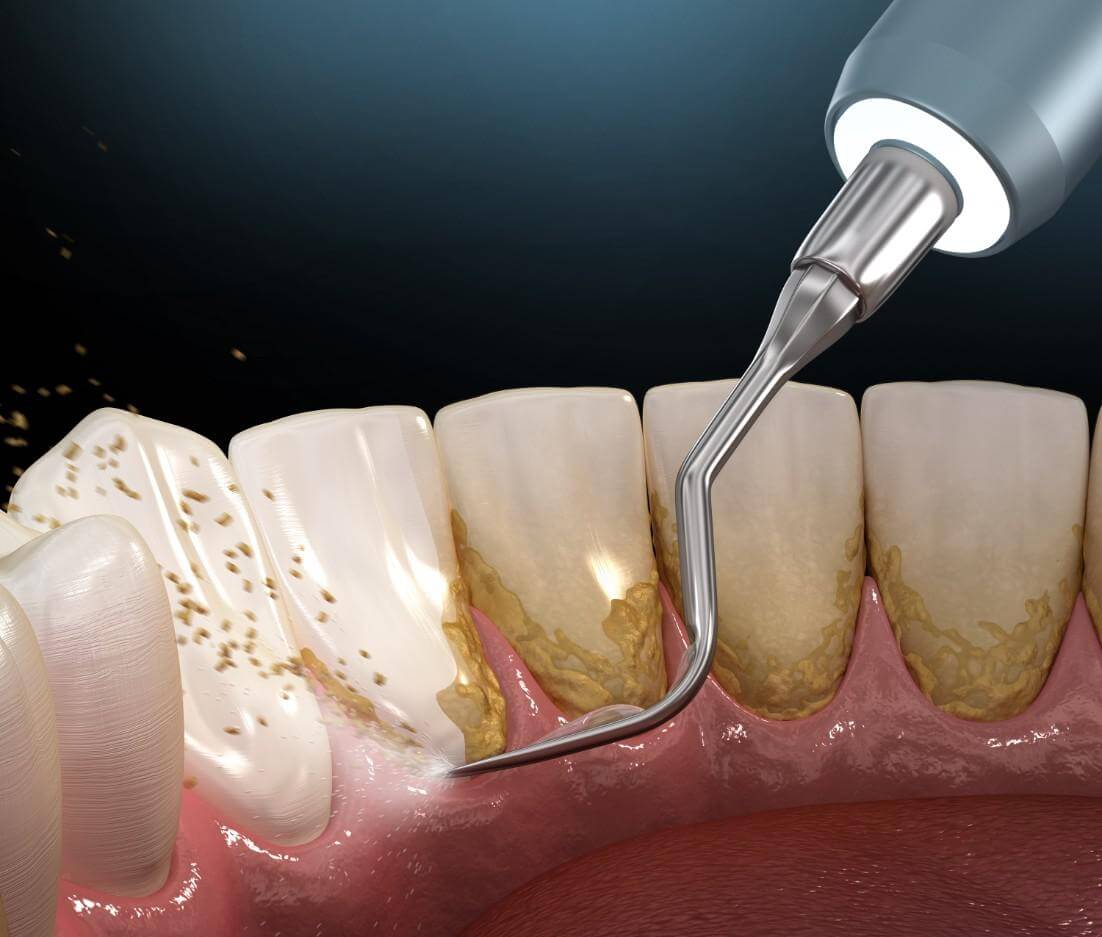Periodontology is the branch of dentistry that deals with the diagnosis and treatment of diseases related to the supporting tissues and gums surrounding the teeth. Deformations in the gum tissues can lead not only to aesthetic problems but also to serious systemic health issues. Untreated periodontal diseases may cause tooth loss, poor oral hygiene, and pave the way for systemic conditions such as cardiovascular diseases. With periodontal treatments, both aesthetic appearance is achieved and oral health is preserved.
What Is Periodontology?
Derived from the words "peri" (around) and "odont" (tooth), periodontology focuses on the examination of the tissues surrounding the teeth and the treatment of diseases that may occur in these areas. This specialty provides solutions for many issues such as gingivitis, gum recession, tartar, gum aesthetics, and implant applications.
What Does Periodontology Do?
The diseases diagnosed and treated within the field of periodontology include:
| Condition | Description |
|---|---|
| Gingivitis | An inflammatory condition of the gums characterized by redness, swelling, and bleeding. |
| Gum Recession | An aesthetic and health issue where the teeth appear longer due to receding gums. |
| Gum Pocket | A space that forms between the tooth and gum, posing a risk of infection. |
| Tartar Formation | Hardened bacterial layers formed due to plaque accumulation. |
| Gummy Smile | A condition where excessive gum tissue is visible while smiling. |
| Implant Planning | The placement of artificial roots into the jawbone in cases of tooth loss. |
How Is Periodontology Diagnosed?
A periodontist first performs a physical examination. Symptoms such as changes in gum color, bleeding, and pain are evaluated. When necessary, radiographic imaging (panoramic X-ray) is used for a detailed analysis of the teeth and surrounding tissues. The depth of the gum pocket is measured to create a treatment plan.
Periodontal Treatment Process
The duration of treatment varies depending on the stage of the disease and the method to be applied. In mild cases, treatment can be completed in a single session, while in more advanced cases, the process may extend over several months.
| Stage | Description |
|---|---|
| Initial Examination | Evaluation of complaints, diagnosis, and treatment planning |
| Tartar Cleaning | Removal of plaque and tartar buildup |
| Root Surface Smoothing | Cleaning and smoothing of the tooth root surfaces |
| Surgical Intervention (if necessary) | Removal of infected tissues through flap operations in advanced cases |
| Follow-Up Sessions | Monitoring the effectiveness of the treatment |
Periodontology Prices
The cost of periodontology treatment depends on several factors, including the type of gum disease, the method used in treatment, the doctor’s experience, whether the treatment is combined with other procedures, the type of anesthesia, and the duration of the treatment. If you have aesthetic or health-related concerns about your gums, you can visit our clinic for an examination to find out whether you are suitable for periodontology treatment and to receive detailed pricing information.
How to Prevent Periodontal Diseases
- Brush your teeth at least twice a day
- Support your oral care with dental floss and mouthwash
- Avoid acidic and sugary foods
- Visit the dentist every six months
- Undergo regular professional dental cleanings

What Are the Advantages of Periodontology (Teeth Cleaning) Treatments?
- The structures around the teeth and gums regain their healthy condition.
- Oral hygiene is achieved and aesthetic appearance is supported.
- Complaints such as bleeding, bad breath, and pain are eliminated.
- The individual's quality of life and self-confidence increase.
- The progression of gum diseases and their potential to cause systemic conditions is prevented.
- Treatments are generally painless and comfortable.
Frequently Asked Questions (FAQ)
Is Periodontology Treatment Painful?
Periodontology treatment is applied with or without anesthesia depending on the disease and its stage. The patient's pain threshold also plays a role. While some simple treatments may not require anesthesia, surgical procedures are always performed under local anesthesia. Therefore, the patient does not feel pain during periodontology treatment.
Who Performs Periodontology Treatment?
Doctors who specialize in periodontology after graduating from dental school are called periodontists. Periodontists treat gum diseases and conditions related to the supporting structures of the teeth, restoring the patient to a healthy oral structure.
How Long Does the Treatment Take?
The duration of periodontal treatment varies depending on the stage, extent of the disease, and the chosen treatment method. Simple cases can be treated in a single session, while advanced cases may require a follow-up process lasting 3 to 6 months.
Who Can Receive Treatment?
Periodontal treatment can be applied to anyone suffering from gum disease. It is suitable for a wide age range, from children to the elderly, and can be planned without any age restrictions.
Can Gum Recession Be Corrected Aesthetically?
Yes. Gum recession can be treated to restore a healthy gum line and improve smile aesthetics. Surgical procedures such as soft tissue grafts may be used for this purpose.
Do Gum Diseases Cause Other Health Problems?
Yes. Untreated periodontal diseases can increase the risk of systemic diseases in the body. Scientific studies have shown that they can be directly linked to conditions such as diabetes, cardiovascular diseases, and pregnancy complications.
![dr.leyla-arvas-800×1000.jpg[1] dr.leyla arvas](https://www.quartz.com.tr/wp-content/uploads/2024/11/dr.leyla-arvas-800x1000.jpg1_.webp)
Author : Op. Dr Leyla ARVAS
Dr Leyla Arvas is an internationally recognised specialist in aesthetic surgery based in Istanbul. Graduated in 1998 from Istanbul University Faculty of Medicine, she has developed her expertise by studying in Taiwan, Japan and Spain during her 20 years of experience.
This article April 13, 2025 was updated on
Editor: admin@quartz.com.tr



